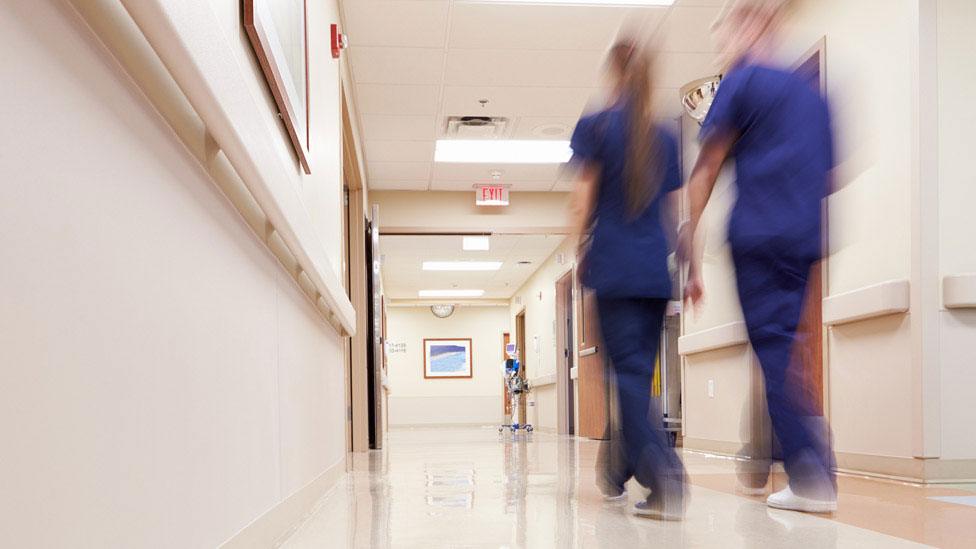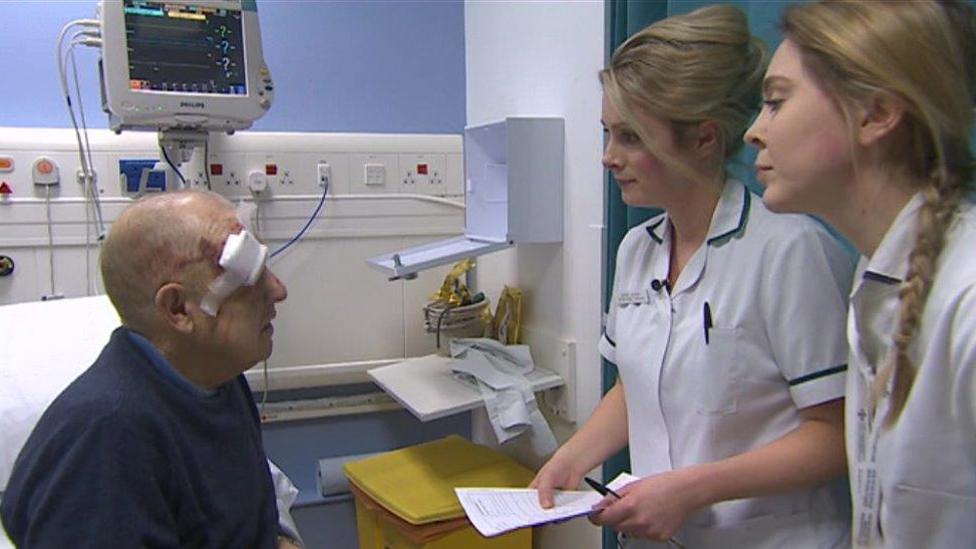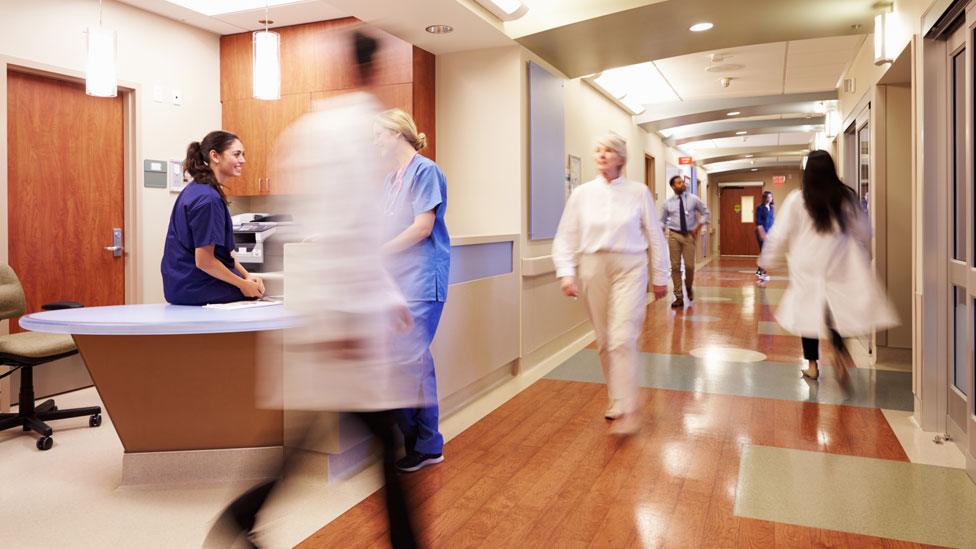Red Cross project to ease A&E pressures extended
- Published

The latest accident and emergency waiting times for February show an improvement on the month
A Red Cross programme, which helps mainly elderly hospital patients back into their homes, is to be extended into the summer.
The pilot scheme is operating at seven emergency departments, aimed at reducing winter pressures.
Since December, Red Cross volunteers and staff have helped 25,000 patients.
Health Minister Vaughan Gething said the Welsh Government would look at the benefits of extending it all year round.
"The service has been especially helpful for people who are socially isolated, those at greater risk from harm because of substance misuse and for people who have recently suffered bereavement," he said.
The Red Cross programme was part a package of measures aimed at easing pressures over the winter period, when typically more elderly patients with complex conditions are admitted to A&E departments.
There are now plans to put the programme out to tender so other voluntary organisations can have an opportunity to deliver the service.

It comes as the latest accident and emergency waiting times for February show an improvement on the month - and on the same time in 2018.
The previous set of health statistics saw Wrexham Maelor hospital post the worst performance on record.
But it has improved in February, with 57% of patients waiting less than four hours for discharge, treatment or transfer; this is still behind the Welsh average of 79%.
Mr Gething said: "Despite the highest recorded attendances at our emergency departments for February, the highest number of people were seen and treated within the four-hour target in February since 2012."

Meanwhile, there was also an improvement in numbers waiting more than 12 hours - just over 4,000 faced the longest waits across Wales.
Analysis
By Owain Clarke, BBC Wales health correspondent
For the four hour waiting measure, performance continues to be well below the target of 95% - which has never been met.
February was the only month over the winter in which A&E recorded better performance figures than last year, although flu levels were much lower than last year.
Previously the Welsh Government had blamed particular problems at two emergency units for the dip in overall performance for Wales as a whole.
The latest figures do show a distinct improvement in February at both Wrexham Maelor and Glan Clwyd hospitals.
In January, Wrexham Maelor posted the worst A&E figures on record for any Welsh hospital with only 49.3% of patients waiting less than four hours but performance is now moving in the right direction.
Glan Clwyd also recorded a significant improvement in February - however both A&E departments remain the worst performing in Wales.

Red Cross volunteers and staff with clinical staff at Glan Clwyd Hospital
The aim of the Red Cross programme is to offer practical help to patients while they are in A&E - as well as giving them help when they settle back home.
This can range from transport to picking up medication.
The hospitals, which will now run the scheme until September, are:
Glangwili, Carmarthen
Princess of Wales, Bridgend
Royal Gwent, Newport
Withybush, Haverfordwest
Wrexham Maelor
University Hospital of Wales, Cardiff
Glan Clwyd, Bodelwyddan
Morriston, Swansea
Kate Griffiths, director of independent living and crisis response for the Red Cross in Wales, said: "The difference made through simple, kind acts cannot be underestimated, for example listening to someone's concerns as they prepare to leave hospital, helping them get the shopping in when they get home."

NHS Tracker: Check how your area is performing (opens in new page)
If you can't see the tracker, click or tap here, external.
- Published20 March 2019

- Published21 February 2019

- Published13 November 2018

- Published25 October 2018
